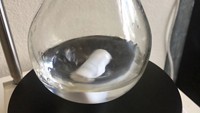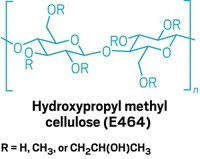Advertisement
Grab your lab coat. Let's get started
Welcome!
Welcome!
Create an account below to get 6 C&EN articles per month, receive newsletters and more - all free.
It seems this is your first time logging in online. Please enter the following information to continue.
As an ACS member you automatically get access to this site. All we need is few more details to create your reading experience.
Not you? Sign in with a different account.
Not you? Sign in with a different account.
ERROR 1
ERROR 1
ERROR 2
ERROR 2
ERROR 2
ERROR 2
ERROR 2
Password and Confirm password must match.
If you have an ACS member number, please enter it here so we can link this account to your membership. (optional)
ERROR 2
ACS values your privacy. By submitting your information, you are gaining access to C&EN and subscribing to our weekly newsletter. We use the information you provide to make your reading experience better, and we will never sell your data to third party members.
Reagents
Glass beads help robots deliver minuscule amounts of reagents
ChemBeads offer microgram dosing of solid reagents for high-throughput reaction screening
by Mark Peplow, special to C&EN
March 27, 2019
| A version of this story appeared in
Volume 97, Issue 13

For humans and robots alike, handling tiny amounts of solid reagents—say, one milligram or less—is fiddly work. Now researchers have developed an ingenious workaround: simply coat the reagents onto small, easy-to-dispense glass beads (Angew. Chem. 2019, DOI: 10.1002/anie.201900536).
Dubbed ChemBeads, these granules are roughly 250 µm wide and can be loaded with more than 300 different solids, including catalysts, ligands, and inorganic bases, which remain stable for more than 18 months. Since a reagent makes up only 1–20% of a ChemBead’s mass, it’s possible to dole out manageable milligrams of beads to deliver micrograms of reagent.
ChemBeads could be particularly useful for high-throughput reaction screening, which uses automated robotic systems to find the ideal recipe for a reaction by testing many different combinations of reagents and conditions. Last year, a consortium of pharmaceutical companies surveyed commercially available systems and concluded that none of them could reliably dispense a wide range of different solids in 2 mg portions (Org. Process Res. Dev. 2018, DOI: 10.1021/acs.oprd.8b00259).

Sometimes drug-discovery labs have to use even smaller amounts of solid reagents when they are running hundreds of test reactions on a valuable organic molecule. “But there was no way to dispense solid reagents at such small scales as 0.1 mg,” says Ying Wang, who leads the high-throughput chemistry team at the pharmaceutical company AbbVie and helped develop ChemBeads.
Another challenge for robotic systems is that every solid has its own physical quirks. Some flow easily, while others are sticky or fluffy, forcing researchers to work out different dispensing protocols for each solid reagent or even add solids by hand. In contrast, all ChemBeads have the same physical properties as the original glass beads. “It’s a clever trick to make all solids behave similarly, in a way that is amenable to easy dispensing,” says Stephen G. Newman, who works on high-throughput reaction discovery at the University of Ottawa.
Wang’s team makes ChemBeads by mixing a solid reagent with glass beads and then giving them a fierce shake using an acoustic mixer. The shaking helps the compounds and beads to stick together through van der Waals forces. Roughly the same amount of reagent adheres to each ChemBead—give or take 10%—which is accurate enough for high-throughout screening, Newman says. When added to a reaction mixture, the reagent coating falls off the bead and into the solvent.
The researchers compared the performance of ChemBeads with normal solid reagents and found no difference in the rates of reaction. The team has made ChemBeads with reagents that are sensitive to air or moisture, and they can also load several different reagents onto each bead.
The researchers use a commercial robotic chemistry system to deliver ChemBeads in precise doses, using the robot’s standard solid dispenser to drop the beads into reaction mixtures through a small nozzle. So far, Wang and her colleagues have tested ChemBeads in more than 120 high-throughput reaction screens, allowing them to find optimum reaction conditions in more than 85% of cases.
One example involved a coupling reaction that forms a carbon-nitrogen bond with the help of a catalyst, a ligand, and a base, potentially offering chemists a bewildering array of options. Over two screening runs, each testing 60–70 different conditions, the team identified a successful recipe that hadn’t previously been reported for this particular reaction.
Advertisement
The AbbVie researchers have typically used ChemBeads to deliver 0.5–1 mg of solid reagents, but they are now moving to much smaller scales. For example, after preparing ChemBeads that each carried three reagents, they used a single bead to run a carbon-nitrogen coupling reaction at a scale of 0.5 µg.
Wang says it’s possible that ChemBeads might become off-the-shelf products in the future. For now, the acoustic mixer used to make ChemBeads costs around $50,000, which might limit the technique to large drug-discovery facilities. But Newman thinks there’s a good chance it could prove popular in the pharmaceutical industry. “I’m excited to see it either adopted or improved upon, or both,” he says.





Join the conversation
Contact the reporter
Submit a Letter to the Editor for publication
Engage with us on Twitter